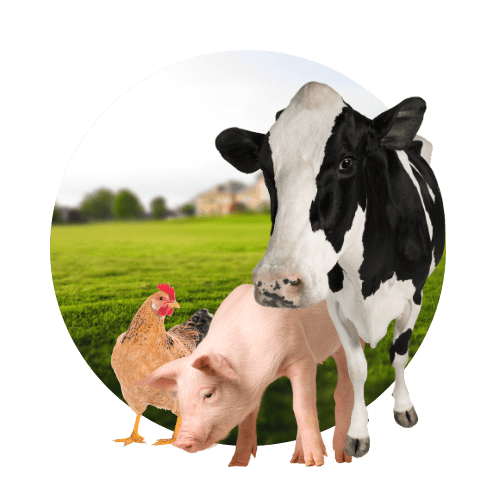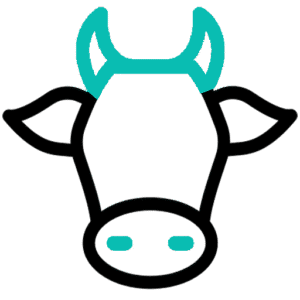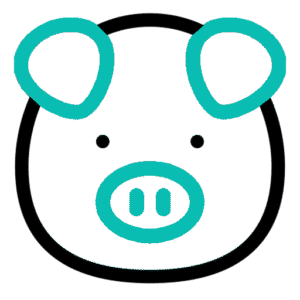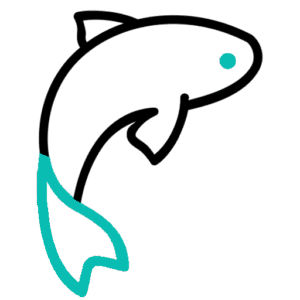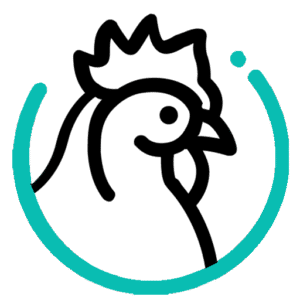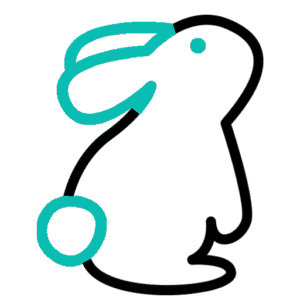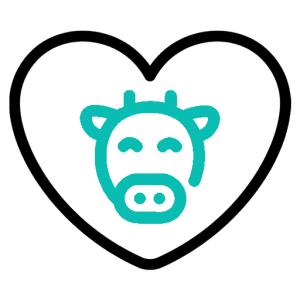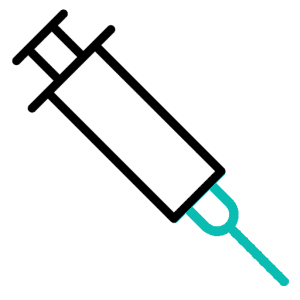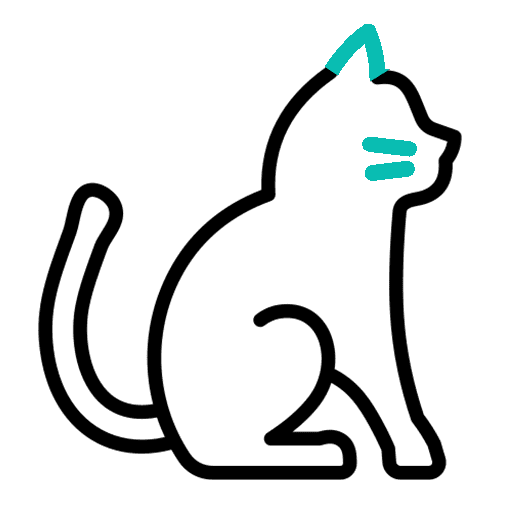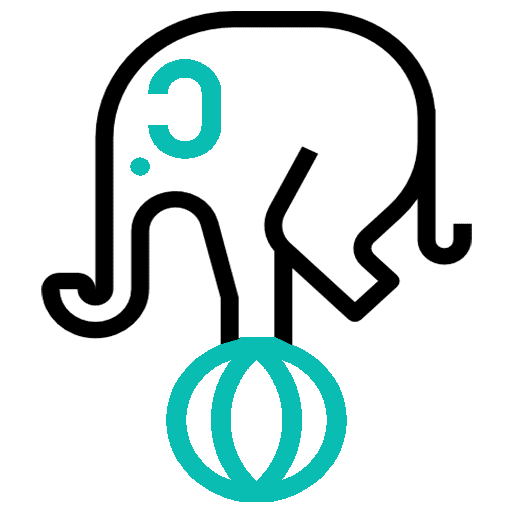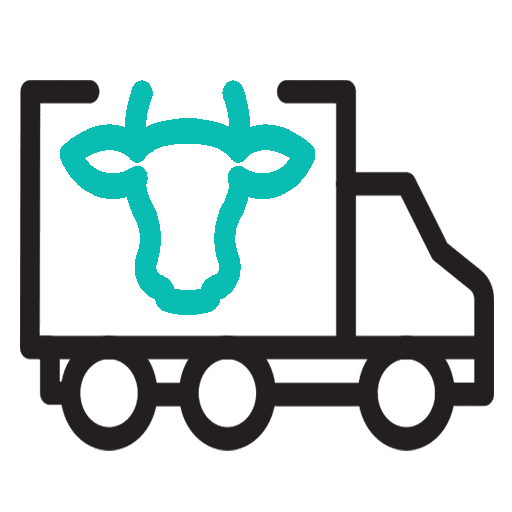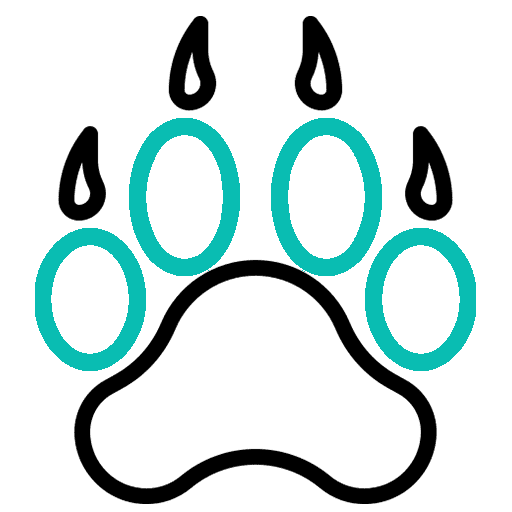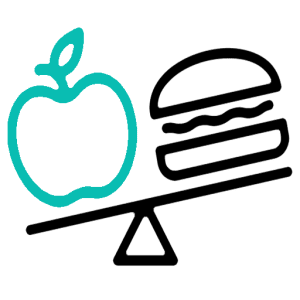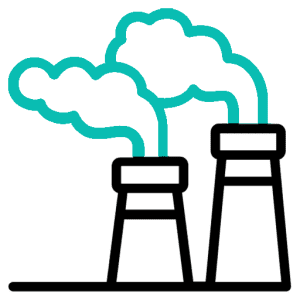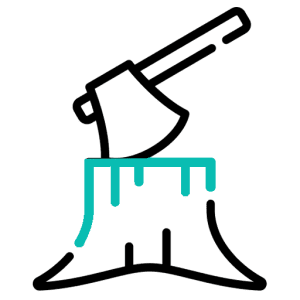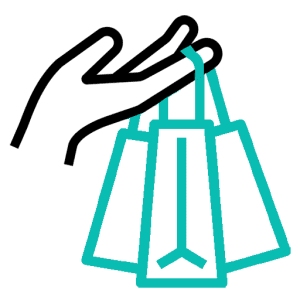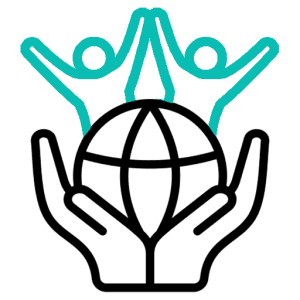Ceilíonn rásaíocht capall, a cheiliúrtar go minic mar spórt mór le rá agus corraitheach, réaltacht ghruama anacair. Taobh thiar d’aghaidh na spleodar agus na hiomaíochta tá saol lán le cruálacht domhain ainmhithe, áit a gcuirtear iallach ar chapaill rás a dhéanamh faoi éigeantas, á dtiomáint ag daoine a bhaineann leas as a n-instinct marthanais nádúrtha. Féachann an t-alt seo, “An Fhírinne faoi Rásaíocht Chapall,” le fáil amach an chruachás bunúsach atá fite fuaite leis an spórt mar a thugtar air, ag cur solas ar an bhfulaingt a d’fhulaing na milliúin capall agus ag moladh é a dhíothú go hiomlán.
Tugann an téarma “capall” féin le fios go bhfuil stair fhada de shaothrú ainmhithe, cosúil le spóirt fola eile ar nós troid choileach agus tarbhchomhraic. In ainneoin dul chun cinn i modhanna traenála le himeacht na gcéadta bliain, níl aon athrú ar chroí-nádúr na rásaíochta capall: is cleachtas brúidiúil é a chuireann brú ar chapaill thar a dteorainneacha fisiceacha, rud a fhágann gortuithe tromchúiseacha agus bás go minic. Cuirtear capaill, a d’fhorbair go nádúrtha chun fánaíocht gan bhac i dtréada, faoi chuing iata agus saothair éigeantais, as a dtagann anacair shuntasach fhisiciúil agus shíceolaíoch.
Tá tionscal na rásaíochta capall, agus é faoi bhláth in go leor áiteanna ar fud an domhain, ag leanúint den chruachás seo faoi chruth spóirt agus siamsaíochta. In ainneoin an ioncaim shubstaintiúil a ghineann sé, is iad na capaill a fhulaingíonn an fíorchostas, a fhulaingíonn oiliúint roimh am, scaradh éigeantach óna máithreacha, agus bagairt leanúnach gortaithe agus báis. Méadaíonn spleáchas an tionscail ar dhrugaí a chuireann le feidhmíocht agus cleachtais pórúcháin mhí-eiticiúil le cás na n-ainmhithe seo.
Trí aird a tharraingt ar na staitisticí gruama maidir le básanna agus gortuithe capall, nochtar san alt seo na saincheisteanna córasacha níos leithne laistigh den tionscal rásaíochta capall.
Iarrann sé go ndéanfaí athluacháil ar noirm shochaíocha a fhulaingíonn a leithéid de chruachás agus molann sé deireadh iomlán a chur le rásaíocht capall, seachas leasuithe amháin. Tríd an iniúchadh seo, tá sé mar aidhm ag an alt gluaiseacht i dtreo deireadh a chur leis an gcleachtas mídhaonna seo uair amháin agus do chách. Cothaíonn rásaíocht capall, a bhfuil glamour í go minic mar spórt mór le rá, réaltacht dorcha agus trioblóideach. Faoin veinír sceitimíní agus iomaíochta tá domhan cruálachta domhain ainmhithe, ina gcuirtear iallach ar chapaill rith faoi eagla, á dtiomáint ag daoine a shaothraíonn a n-instinct nádúrtha le maireachtáil. Pléann an t-alt seo, “The Real Story Behind Horseracing,” go mór le cruálacht bhunúsach an spóirt mar a thugtar air, ag nochtadh an fhulaingt a d’fhulaing na milliúin capall agus ag maíomh go gcuirfí deireadh leis go hiomlán.
Is léiriú é an téarma “capall” é féin ar an drochíde atá ann le fada an lá, cosúil le spóirt fola eile ar nós troid choileach agus troid tairbh. Leagann an ainmníocht aonfhocail seo béim ar normalú dúshaothrú ainmhithe atá leabaithe i stair an duine. In ainneoin an éabhlóid atá tagtha ar mhodhanna traenála thar na mílte bliain, níl aon athrú ar nádúr bunúsach na rásaíochta capall: is cleachtas brúidiúil é a bhrúnn capaill thar a dteorainneacha fisiceacha, rud a fhágann gortuithe tromchúiseacha agus bás go minic.
Capaill, ainmhithe tréada a tháinig chun cinn go nádúrtha chun fánaíocht a dhéanamh saor in aisce i spásanna oscailte, tá siad faoi réir saol iata agus saothair éigeantais. Ón nóiméad a bhristear isteach iad, cuirtear a n-instinct nádúrtha faoi chois trí “insamhaltaí creiche” arís agus arís eile, rud a chruthaíonn anacair shuntasach agus a chuireann isteach ar a ndea-bhail. Mar thoradh ar rásaíocht, bíonn go leor saincheisteanna sláinte ann, lena n-áirítear fadhbanna imshruthaithe agus neamhoird dhromlaigh.
Leanann tionscal na rásaíochta capall, atá faoi bhláth i go leor tíortha ar fud an domhain, leis an chruachás seo a bhuanú faoi chruth an spóirt agus na siamsaíochta. In ainneoin an ioncaim shuntasach a ghintear, is iad na capaill, a fhulaingíonn ó oiliúint roimh am, scaradh éigeantach óna máithreacha, agus an bhagairt leanúnach gortaithe agus báis a íocann an costas. Méadaíonn spleáchas an tionscail ar dhrugaí a fheabhsaíonn feidhmíocht agus na cleachtais póraithe mí-eiticiúil staid na n-ainmhithe seo.
Ní hamháin go gcuireann an t-alt seo béim ar na staitisticí gruama maidir le básanna agus gortuithe capall ach nochtar freisin na saincheisteanna córasacha níos leithne laistigh den tionscal rásaíochta capall. Iarrann sé go ndéanfaí athluacháil ar noirm shochaíocha a fhulaingíonn cruálacht den sórt sin agus a mholann deireadh iomlán a chur le rásaíocht capall, seachas leasuithe amháin. Trí sholas a chur ar fhíornádúr rásaíochta capall, tá sé mar aidhm ag an alt seo gluaiseacht i dtreo deireadh a chur leis an gcleachtas mídhaonna seo uair amháin agus do chách a adhaint.
Is í an fhírinne faoi rásaíocht capall ná gur cineál mí-úsáide ainmhithe é ina gcuirtear iallach ar chapaill rith faoi eagla agus duine á chiapadh ar a dhroim.
Insíonn an t-ainm rud éigin duit cheana féin.
Nuair a bhíonn cineál “úsáide” ainmhí agat a tháinig chun bheith ina fhocal amháin i mBéarla (mar a bhfuil ainm an ainmhí “fuadaithe” faoin ainm “úsáid”), tá a fhios agat nach mór gur cineál mí-úsáide a bhí sa ghníomhaíocht sin. ar feadh i bhfad. Tá troid choileach, tarbhchomhraic, sealgaireacht sionnach agus beachaireacht mar shamplaí den fheiniméan foclóireachta seo. Tá ceann eile ag rásaíocht capall. Ar an drochuair, b’éigean do chapaill rásaíocht a dhéanamh ar feadh na mílte bliain, agus cuireann an focal aonair a úsáidtear go minic (ní i gcónaí) é sa chatagóir chéanna leis an “spórt fola” maslach eile.
Is gníomhaíocht éadrócaireach í rásaíocht capall atá faoi cheilt mar “spórt” a chuireann an-fhulaingt do na milliúin capall agus nach bhfuil aon údar maith leis sa 21ú haois . Is cineál éadrócaireach de mhí-úsáid ainmhithe é a chuireann fulaingt agus bás suas go náireach sa tsochaí phríomhshrutha. Míneoidh an t-alt seo cén fáth ar chóir deireadh a chur leis, agus ní hamháin athchóiriú a dhéanamh chun an fhulaingt a eascraíonn as a laghdú.
Rásaíocht Capall Tagann ó Marcaíocht Capall

B’fhéidir nach léir d’aon duine a chuireann i gcoinne rásaíochta capall nach dtiocfadh forbairt ar ghníomhaíocht dá leithéid riamh i bhfoirm mí-úsáide ainmhithe a aimsímid inniu mura maraíodh capaill ar an gcéad dul síos.
Is tréada iad capaill a tháinig chun cinn le 55 milliún bliain anuas chun cónaí le go leor capall eile i spásanna oscailte, ní le daoine i stáblaí. Is luibhiteoirí iad atá ina gcreach nádúrtha ag creachadóirí cosúil le mac tíre agus tá sraith meicníochtaí cosanta tagtha chun cinn chun gabháil a sheachaint. Is éard atá i gceist le cuid acu seo ná rith chomh tapa agus is féidir, ciceáil ar gcúl chun an t-ionsaitheoir atá ag teacht isteach a dhíbirt, nó léim suas agus síos chun aon chreachadóir atá orthu cheana féin a scaoileadh.
Timpeall 5,000 bliain ó shin, thosaigh daoine i lár na hÁise ag gabháil capaill fhiáine agus ag léim ar a ndroim. Is é an frithghníomh instinctach nádúrtha dá mbeadh daoine ar a ndroim ná fáil réidh leo mar go bhféadfadh a saol a bheith i mbaol. Fiú amháin tar éis na mblianta seo de cheansú a tháirgeann go leor pórtha capall a cruthaíodh le roghnú saorga ón gcapall fiáin bunaidh atá imithe in éag anois, tá an instinct cosantach sin fós ann. Ní mór na capaill go léir a bhriseadh isteach fós chun daoine a fhulaingt ar a ndroim, nó murach sin, chaithfidís amach iad - agus is é sin a mbaineann róidéisí “stíl bronco” leas as.
Tá an próiseas briseadh capaill dírithe ar dheireadh a chur leis an bhfreagairt nádúrtha ar chreachadóirí trí “ionsamhlúcháin chreiche” a athrá go dtí go dtuigeann an capall na “creachadóirí” (na daoine) ach amháin má chasann tú ar chlé agus iad ag iarraidh dul ar dheis nó fanacht gan stad nuair a bhíonn siad. mian leat dul ar aghaidh ag an luas beacht a ordaítear. Agus tarlaíonn na “bites” go fisiciúil nuair a úsáidtear gach cineál gléas (lena n-áirítear fuipeanna agus spor). Mar sin, ní hamháin gur droch rud é capaill a bhriseadh isteach mar is é an toradh deiridh ná capall a chaill cuid dá “sláine”, ach tá sé mícheart freisin mar go gcuireann sé anacair ar an gcapall agus é á dhéanamh.
B’fhéidir nach n-úsáidfidh na daoine a bhíonn ag traenáil capaill inniu na modhanna díreacha céanna a d’úsáidtí san am a chuaigh thart agus b’fhéidir go ndéarfadh siad nach briseadh an capall a thuilleadh é an rud a dhéanann siad anois, ach “oiliúint” atá níos mísle agus níos caolchúisí – nó fiú “scolaíocht” a ghlaoch air – ach tá an éifeacht oibiachtúil agus diúltach mar an gcéanna.
Is minic a dhéanann marcaíocht ar chapaill dochar dóibh. Fulaingíonn capaill galair ar leith mar gheall ar mheáchan duine a bheith ar a dhroim - rud nach bhfuil glactha ag a gcorp riamh leis. Cuirfidh meáchan duine ar chapall ar feadh i bhfad comhréiteach ar an gcúrsaíocht tríd an sreabhadh fola sa chúl a dhúnadh, rud a d'fhéadfadh damáiste fíocháin a dhéanamh le himeacht ama, ag tosú go minic in aice leis an gcnámh. Is fadhb é Siondróm Spín Póg freisin de bharr marcaíocht, áit a dtosaíonn spines veirteabra an chapaill ag dul i dteagmháil lena chéile agus uaireanta comhleádaithe.
Titeann capaill mharcaíochta as ídiú uaireanta má chuirtear iallach orthu an iomarca rith nó faoi na coinníollacha míchearta, nó féadfaidh siad titim agus a ngéaga a bhriseadh, rud a fhágann go minic go n-eotanáis. I gcásanna nádúrtha, d’fhéadfadh capaill a bhíonn ag rith gan marcaigh a bheith in ann tionóiscí a d’fhéadfadh díobháil a dhéanamh dóibh a sheachaint mar ní bheidh orthu dul ar tír-raon deacra nó thar bhacainní contúirteacha. D'fhéadfadh go gcuirfeadh briseadh isteach na gcapall a n-instincts maidir le stuamacht agus rabhadh.
Tarlaíonn na fadhbanna seo go léir le marcaíocht capall, ach nuair a fhéachann tú ar rásaíocht capall amháin, nach bhfuil ann ach foirm eile de mharcaíocht chapaill mhór atá ag tarlú leis na mílte bliain (tá fianaise ann go raibh rásaíocht capall ag tarlú cheana féin sa tSean-Ghréig, sa tSean Róimh, sa Bhablóin, sa tSiria. , Shádach, agus an Éigipt), na fadhbanna in olcas, mar go bhfuil capaill iallach a teorainneacha fisiceacha araon i "oiliúint" agus le linn na rásaí.
I rásaíocht capall, úsáidtear foréigean chun iallach a chur ar na capaill “feidhmiú” níos fearr ná capaill eile. Is é instinct na gcapall teitheadh ó chreachadóirí trí rith chomh fada agus is féidir leo faoi shábháilteacht a dtréada a mbaineann na marcach leas as. Níl na capaill ag rásaíocht i ndáiríre i gcoinne a chéile (ní bhíonn cúram orthu i ndáiríre faoi cé a bhuaigh an rás), ach tá siad ag iarraidh éalú ó chreachadóir atá ag béiceadh go dian orthu. Sin atá i gceist le húsáid an fhuip ag an jockey, agus úsáidtear é ar thaobh posterior an chapaill chun an capall a rith sa treo eile. Ar an drochuair do na capaill, níl an creachadóir ag imeacht mar go dtarlaíonn sé a bheith strapped ar a ndroim, mar sin na capaill a choinneáil ar siúl níos tapúla agus níos tapúla i bhfad thar a teorainneacha fisiceacha. Is tromluí é rásaíocht capall in aigne an chapaill (mar a bheadh i gceist le duine a bheith ag rith ó mhí-úsáideoir foréigneach ach gan é a bheith in ann éalú leis). Is tromluí athfhillteach é a leanann ag tarlú arís agus arís eile (agus sin an fáth go leanann siad ag rith rás níos tapúla i ndiaidh cine mar a bhí taithí acu cheana féin air).
An Tionscal Rásaíochta Capall

Tarlaíonn rásaíocht capall fós , go dlíthiúil, i go leor tíortha, agus tá tionscal rásaíochta capall sách mór ag go leor acu, mar shampla SAM, Ceanada, an Ríocht Aontaithe, an Bheilg, an tSeicsia, an Fhrainc, an Ungáir, Éire, an Pholainn, an Astráil, an Nua-Shéalainn, an Afraic Theas. , Oileán Mhuirís, an tSín, an India, an tSeapáin, an Mhongóil, an Phacastáin, an Mhalaeisia, an Chóiré Theas, Aontas na nÉimíríochtaí Arabacha, agus an Airgintín. I go leor de na tíortha a bhfuil tionscal rásaíochta capall acu, chuir coilínigh an ama a chuaigh thart (mar na SA, an Astráil, an Nua-Shéalainn, Ceanada, an Mhalaeisia, etc.) isteach é seo dóibh. In aon tír ina bhfuil cearrbhachas dlíthiúil, is gnách go mbíonn comhpháirt gealltóireachta ag an tionscal rásaíochta capall, a ghineann go leor cistí.
Tá go leor cineálacha rásaíochta capall ann, lena n-áirítear rásaíocht Maol (áit a dtéann capaill go díreach idir dhá phointe timpeall rian díreach nó ubhchruthach); Rásaíocht Léim, ar a dtugtar freisin Steeplechasing nó, sa Bhreatain Mhór agus in Éirinn, rásaíocht Fiach Náisiúnta (nuair a rás capaill thar chonstaicí); Rásaíocht úmacha (áit a mbíonn capaill ag trotaireacht nó ag luascadh agus iad ag tarraingt tiománaí); Diallait Trotting (áit a gcaithfidh capaill trot ó phointe tosaigh go dtí an pointe deiridh faoin diallait); agus Rásaíocht seasmhachta (áit a dtaistealaíonn capaill ar fud na tíre thar achair an-fhada, idir 25 agus 100 míle de ghnáth. I measc na bpórtha a úsáidtear le haghaidh rásaíochta comhréidh tá an Horse Horse, Thoroughbred, Arabian, Paint, agus Appaloosa.
Sna Stáit Aontaithe, tá 143 traic ghníomhacha capall i 33 stát éagsúil, agus is é California an stát leis na rianta is gníomhaí (le 11 rian). Chomh maith leo seo, tá 165 rianta traenála . Tá ioncam de £11 billiún sa bhliain ag tionscal rásaíochta capall na SA. Is iad an Kentucky Derby, an Arkansas Derby, Corn na bPóraitheoirí agus na Belmont Geallta na himeachtaí is tábhachtaí acu.
Is rásaíocht chothrom agus léimneach folaíochta den chuid is mó atá i rásaíocht capall sa Bhreatain Mhór. Sa Ríocht Aontaithe, amhail an 18 Aibreán 2024, tá 61 ráschúrsa gníomhacha (gan cúrsaí Pointe-go-Pointe a úsáideann seilg a áireamh). Dúnadh dhá ráschúrsa sa 21ú haois , Folkestone i Kent agus Towcester i Northamptonshire. Níl aon ráschúrsa gníomhach i Londain. Is é an ráschúrsa is mó le rá ná ráschúrsa Aintree i Merseyside, áit a mbíonn an Great National clúiteach ar siúl. D’oscail sé i 1829 agus tá sé á reáchtáil ag an Jockey Club (an eagraíocht rásaíochta capall is mó sa RA, ar leis 15 de na ráschúrsaí cáiliúla sa Bhreatain), agus is rás seasmhachta é ina bhfuil iallach ar 40 capall léim 30 fál trí cheithre cinn. agus - ceathrú míle. Saothraítear thart ar 13,000 searraigh
Sa Fhrainc, úsáidtear 140 ráschúrsa do rásaíocht folaíochta, agus tá 9,800 capall faoi oiliúint. Tá 400 ráschúrsa ag an Astráil, agus is iad na himeachtaí agus na rásaí is cáiliúla ná Sydney Golden Slipper agus Corn Melbourne. Tá an margadh rásaíochta capall is mó ar domhan ag an tSeapáin i dtéarmaí luacha, le níos mó ná $16 billiún in ioncam in aghaidh na bliana.
Bunaíodh Cónaidhm Idirnáisiúnta na nÚdarás Rásaíochta Capall i 1961 agus 1983 ach in 2024 níl Craobhchomórtas Domhanda Rásaíochta Capall oifigiúil acu.
Chuir eagraíochtaí um chearta ainmhithe ar fud an domhain dúshlán an tionscail - go háirithe sa Ríocht Aontaithe - ach toisc go bhfuil rásaíocht capall fós dlíthiúil, leanann na húdaráis ag cosaint na gníomhaíochta cruálach seo. Mar shampla, ar an 15 Aibreán 2023, ghabh póilíní na Merseyside 118 gníomhaí ó Animal Rising as a gcuid iarrachtaí cur isteach ar an Grand National ag ráschúrsa capall Aintree. Ar 22 Aibreán 2023, gabhadh 24 gníomhaí Éirí Amach Ainmhithe ag Grand National na hAlban in Ayr, Albain. Ar an 3 Meitheamh 2023, gabhadh na mórán gníomhaithe cearta ainmhithe maidir leis an gcur isteach ar an Epsom Derby , rás capall cáiliúil a bhíonn ar siúl ag Ráschúrsa Epsom Downs i Surrey, Sasana.
Capaill Gortaithe agus Maraithe i Rásaíocht Capall
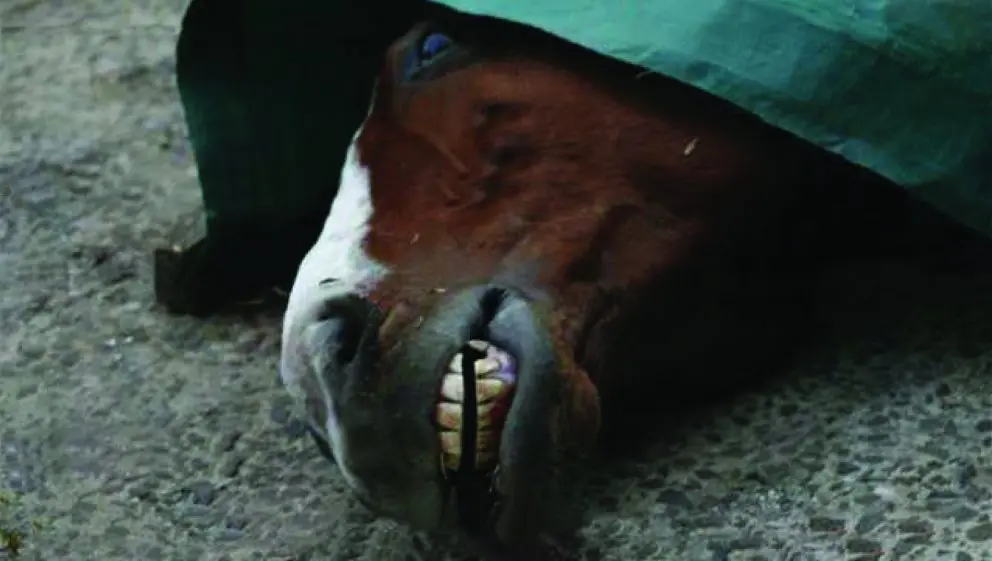
De na cineálacha marcaíochta capall ar fad a tharla riamh, is é rásaíocht capall an dara ceann is cúis le níos mó gortaithe agus bás do chapaill - tar éis capaill marcra a úsáid chun troid le linn cogaí - agus is dócha an chéad cheann sa 21ú haois . Toisc nach mbíonn deis ach ag capaill atá i ndálaí fisiciúla barrmhaithe rás a bhuachan, d’fhéadfadh aon ghortú a thabhaíonn an capall le linn traenála nó ag rás a bheith ina phianbhreith báis do na capaill, a d’fhéadfaí a mharú (go minic lámhaigh ar an mbóthar féin) mar chaitheamh. aon airgead chun iad a leigheas agus iad a choinneáil beo mura bhfuil siad chun rásaíocht a dhéanamh, b'fhéidir nach mbeadh a gcuid "úinéirí" ag iarraidh a dhéanamh ach amháin más mian leo iad a úsáid le haghaidh pórú.
De réir Horseracing Wrongs , eagraíocht neamhbhrabúis atá tiomanta deireadh a chur leis an tionscal rásaíochta capall atá cruálach agus marfach sna Stáit Aontaithe, ón 1 Eanáir 2014 go dtí an 26 Aibreán 2024, deimhníodh gur maraíodh 10,416 capall ag rianta rásaíochta capall na SA. Measann siad go bhfaigheann os cionn 2,000 capall bás ag rianta SAM gach bliain.
Ó 13 Márta 2027, tá an láithreán gréasáin horsedeathwatch , atá á reáchtáil ag an ngrúpa um chearta ainmhithe na Breataine Animal Aid, ag rianú bás capall sa tionscal rásaíochta capall sa RA, agus go dtí seo tá 2776 bás i 6,257 lá curtha san áireamh ann. Sa Ríocht Aontaithe, ó tharla an chéad Grand National i 1839, tá níos mó ná 80 capall tar éis bás a fháil le linn an rása féin, agus tharla beagnach leath de na básanna seo idir 2000 agus 2012. Sa bhliain 2021, An Long Mile a lámhaigh marbh le linn na príomhchúiseanna. cine tar éis gortú a fháil agus é ag rith ar an gcúrsa comhréidh, dhá bhliain tar éis do Up for Review a shaol a chailleadh in Aintree. Ag Aintree amháin, tá níos mó ná 50 capall tar éis bháis ó 2000, lena n-áirítear 15 le linn an Grand National féin. Sa bhliain 2021 básaíodh 200 capall ar fud na Breataine. Tá leasuithe déanta ó 2012, ach is beag difríocht atá déanta acu.
Tarlaíonn formhór na mbásanna i rásaíocht léimneach. Is rás contúirteach d’aon ghnó é an Grand National. Bíonn ar pháirc chontúirteach plódaithe de 40 capall aghaidh a thabhairt ar 30 léim thar a bheith dúshlánach agus fealltach. Aiste bia do dhá chapall ag príomh-rásaí capall na Féile Aintree ar an 10 Aibreán 2022. Discorama bás tar éis dó a bheith tarraingthe suas le gortú roimh an 13ú fál, agus fuair Eclair Surf , duine de na cinn is ansa leis, bás tar éis titim mhór ag an tríú fál. Is ráschúrsa contúirteach é Cheltenham freisin. Ó 2000, tá 67 capall tar éis bháis ag an bhféile bhliantúil seo (11 acu i gcruinniú 2006).
Ar an 11 Márta 2024, reáchtáil Animal Aid vigil lasmuigh de dhoirse Údarás Rásaíochta Capall na Breataine (BHA), i gcuimhne ar an 175 capall a maraíodh ar ráschúrsaí na Breataine in 2023. In Éirinn, fuair ar a laghad 100 capall bás an bhliain sin. Ba iad Lichfield le naoi mbás, Souyjfield le ocht mbás, agus Doncaster le seacht mbás na capaill rása ba mharbhaí sa Bhreatain in 2023.
In Ontario, Ceanada, rinne Peter Physick-Sheard, ollamh emeritus le leigheas daonra, staidéar ar 1,709 bás capall sa tionscal rásaíochta capall idir 2003 agus 2015, agus fuarthas amach go raibh tromlach na mbásanna inchurtha i leith “ damáiste le linn aclaíochta do chóras mhatánchnámharlaigh na gcapall. ”.
Féadfaidh aon chapall óg a bhí sláintiúil roimhe seo bás a fháil ar aon raon rásaíochta ar domhan. Ar 3 Lúnasa 2023, fuair Danehill Song, capall 3 bliana d’aois, bás tar éis dó a bheith ag rith ar lá oscailte Rásaíocht Capall Tíre Fíona ag Aonach Contae Sonoma i Santa Rosa, California, SAM. Thóg an capall drochchéim le linn ruaig sa stráice agus maraíodh é ina dhiaidh sin. Liostaigh Bord Rásaíochta Capall California cúis bhás Danehill Song mar mhatánchnámharlaigh. Ba é Danehill Song an 47ú capall a maraíodh le linn shéasúr rásaíochta California 2023. As na 47 capall a fuair bás i mbliana, taifeadadh 23 de na básanna mar ghortuithe mhatánchnámharlaigh, rud a fhágann gur lámhaigh marbh na capaill de ghnáth ar chúis a dtugann na heagraithe “forais atruacha”. Ar 4 Lúnasa 2023, fuair capall eile bás ag rásrian Del Mar. Fuair cúigear capall bás ag Aonach Chontae Alameda i Meitheamh agus Iúil.
Fadhbanna Eile Leasa Ainmhithe i Rásaíocht Capall

Tá rudaí eile cearr leis an tionscal rásaíochta capall seachas an bás agus gortuithe díreach mar gheall air, agus an fhulaingt a fuarthas le hoidhreacht in aon chásanna marcaíochta capall. Mar shampla:
Scaradh Éigeantach . Baineann an tionscal na capaill a phóraíonn sé le haghaidh rásaíochta óna máithreacha agus a dtréada ó aois an-óg, mar go meastar gur sócmhainní luachmhara iad le trádáil. Is minic a dhíoltar iad ag aois tairisceana amháin, agus is dócha go mbainfí leas astu sa tionscal ar feadh an chuid eile dá saol.
Oiliúint roimh am. Leanann cnámha capaill ag fás go dtí sé bliana d'aois, agus dá airde sa chorp a bhíonn na cnámha, is amhlaidh is moille an próiseas fáis. Dá bhrí sin, is iad na cnámha sa dromlach agus sa mhuineál an ceann deireanach a chríochnaíonn fás. Mar sin féin, tá capaill a phóraítear le haghaidh rásaíochta, cuirtear iallach orthu cheana féin oiliúint dhian a dhéanamh ag 18 mí agus rás a dhéanamh ag dhá bhliain d'aois, nuair nach bhfuil go leor dá gcnámha forbartha go hiomlán fós agus go bhfuil siad níos leochailí. Léiríonn capaill sa tionscal atá ceithre, trí, nó fiú dhá bhliain d'aois nuair a fhaigheann siad bás riochtaí ainsealacha cosúil le osteoarthritis agus galar degenerative comhpháirteach de bharr na faidhbe seo.
I mbraighdeanas . De ghnáth coinnítear capaill sa tionscal rásaíochta capall faoi chuing ina n-aonar i stallaí beaga 12×12 ar feadh breis agus 23 uair sa lá. Ní bhíonn na tréada ainmhithe nádúrtha sóisialta seo i gcónaí i gcuideachta capaill eile, rud a éilíonn a n-instinct. Tá iompar steiréitíopach a fheictear go coitianta i gcapaill faoi chuing, mar shampla cribbing, windsucking, bobbing, fíodóireacht, tochailt, ciceáil, agus fiú féin-lotaíocht, coitianta sa tionscal. Taobh amuigh den bhothán pórúcháin, coinnítear staileanna scartha ó láracha agus ó fhir eile, agus nuair nach mbíonn siad lonnaithe ina stábla, tá siad teoranta taobh thiar de chlaí arda.
Dópáil. Uaireanta déantar capaill a úsáidtear i rásaí a instealladh le drugaí feabhsaithe feidhmíochta, a bhfuil éifeacht acu gortuithe a chumhdach agus pian a laghdú. Mar thoradh air sin, féadfaidh capaill iad féin a ghortú níos mó nuair nach stopann siad toisc nach mbraitheann siad a gcuid gortaithe.
Mí-úsáid ghnéasach. Cuirtear iallach ar go leor capall sa tionscal rásaíochta capall pórú, cibé acu is maith leo é nó nach bhfuil. Le linn séasúr póraithe sé mhí, is féidir staileanna a dhéanamh chun láracha a chlúdach beagnach gach lá. Timpeall 30 bliain ó shin, ba annamh a bhí cúpláil le 100 lárach in aghaidh na bliana, ach anois tá sé coitianta go mbeadh 200 lárach ag staileanna tosaigh ar a gcuid leabhar pórúcháin. Úsáidtear inseamhnú saorga freisin, agus fiú clónáil . Cuirtear baineannaigh phóraithe faoi dhrugaí agus faoi thréimhsí fada de sholas saorga chun atáirgeadh a rialú agus a bhrostú. Bíonn searrach amháin ag láracha san fhiántas gach dhá bhliain, ach is féidir leis an tionscal iallach a chur ar láracha sláintiúla agus torthúla searrach a tháirgeadh gach bliain.
Marú. Maraíodh formhór na gcapall a úsáidtear i rásaíocht i seamlais nuair a ritheann siad níos moille mar gheall ar aois nó gortaithe. I roinnt tíortha, beidh a gcuid feola sa slabhra bia daonna , agus i dtíortha eile d'fhéadfadh go n-úsáidfear a gcuid gruaige, craiceann nó cnámha chun críocha éagsúla. Chomh luath agus nach féidir leis na capaill a reáchtáil a thuilleadh nó go meastar nach fiú iad a phórú, níl luach acu ar an tionscal a thuilleadh, rud nach bhfuil ag iarraidh airgead a chaitheamh ag beathú orthu nó ag tabhairt aire dóibh, agus mar sin déantar iad a dhiúscairt.
Tá go leor rudaí mícheart maidir le rásaíocht capall agus ba chóir é a chosc go hiomlán, ach níor cheart dúinn dearmad a dhéanamh ar fhréamh na faidhbe. Ní hamháin go dteastaíonn ó veaganaigh eiticiúla deireadh a chur le rásaíocht capall ach cuireann siad i gcoinne marcaíocht capall ar fad toisc gur cineál saothraithe do-ghlactha é. Ní rud ceart eiticiúil é ainmhithe a choinneáil faoi chuing, rópaí a chur timpeall a mbéal, léim ar a ndroim, agus iallach a chur orthu tú a iompar cibé áit ar mhaith leat dul. Má ligeann capaill do roinnt daoine é a dhéanamh, is é an fáth a bhfuil a spiorad “briste” is cúis leis. Ní dhéileálann Vegans le capaill mar fheithiclí, ná ordaigh dóibh a dtreoracha a leanúint, agus ná cuir in iúl dóibh má leomh siad neamh-ghéilleadh - gach cleachtas intreach in aon marcaíocht ar chapaill. Ina theannta sin, má dhéantar marcaíocht ar horseback a normalú, scriostar an capall ó bheith ann mar dhuine mothaitheach neamhspleách. Nuair a éiríonn an teaglama daonna-capall ina “marcach” atá i gceannas anois, tá an capall scriosta as an bpictiúr, agus nuair nach bhfeiceann tú na capaill níos mó, ní fheiceann tú a gcuid fulaingthe. Tá rásaíocht capall ar cheann de na cineálacha marcaíochta capall is measa, mar sin ba chóir go mbeadh sé ar cheann de na chéad fhoirmeacha le deireadh a chur leis.
In ainneoin a bhfuil le rá ag an tionscal, níl aon chapall ag iarraidh a bheith marcaithe le rith i scaoll le capaill eile féachaint cé a ritheann is tapúla.
Is í an fhírinne faoi rásaíocht capall ná gur tromluí athfhillteach í seo do na capaill a rugadh sa tionscal cruálach seo, rud a fhágann go maróidh siad iad.
Fógra: Foilsíodh an t -ábhar seo ar dtús ar Veganfta.com agus b'fhéidir nach léireodh sé tuairimí an Humane Foundation.



